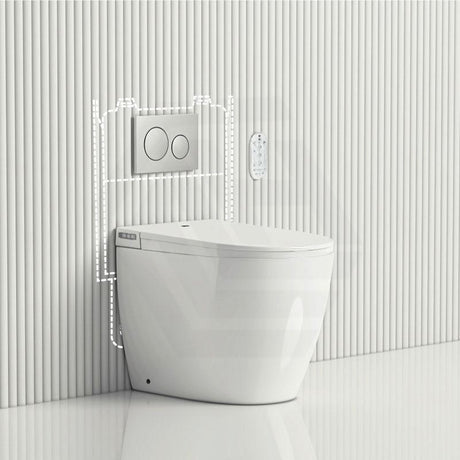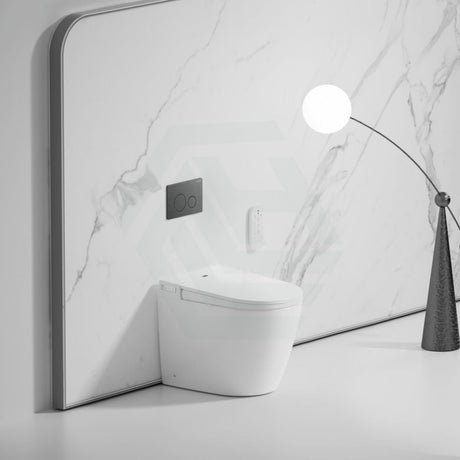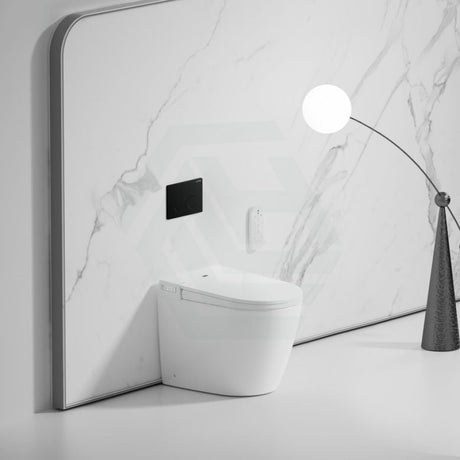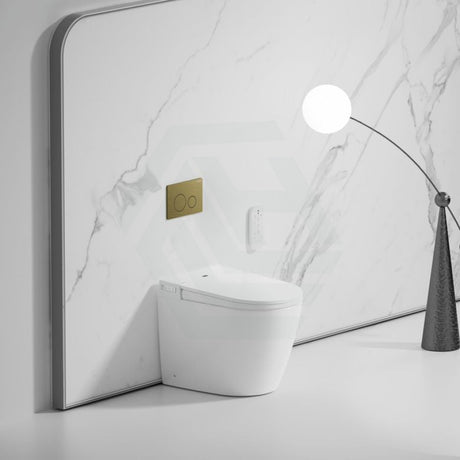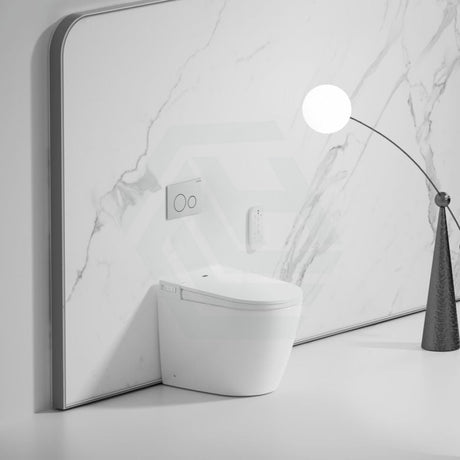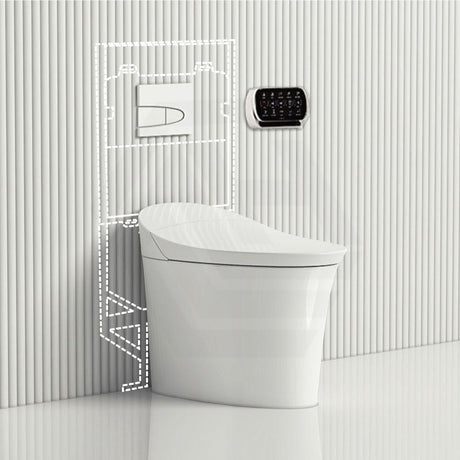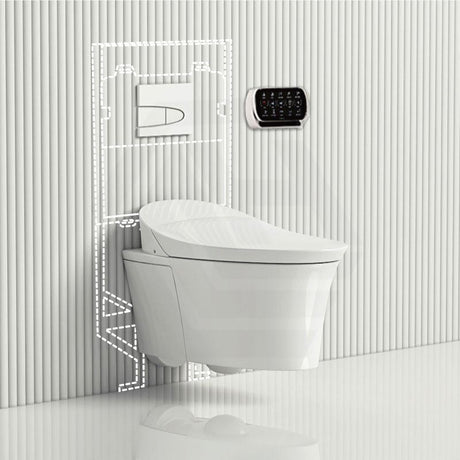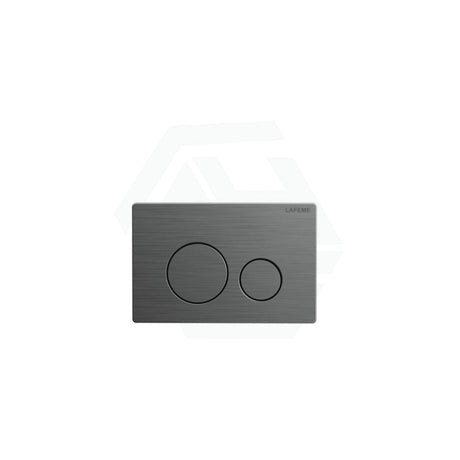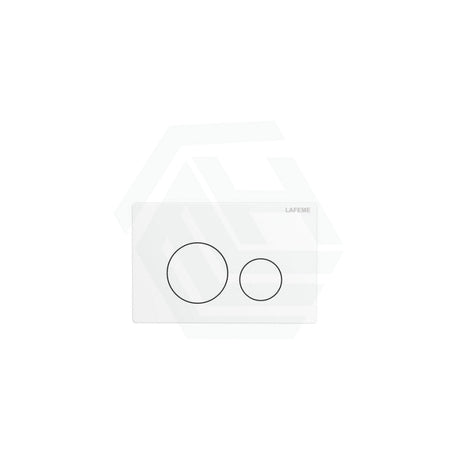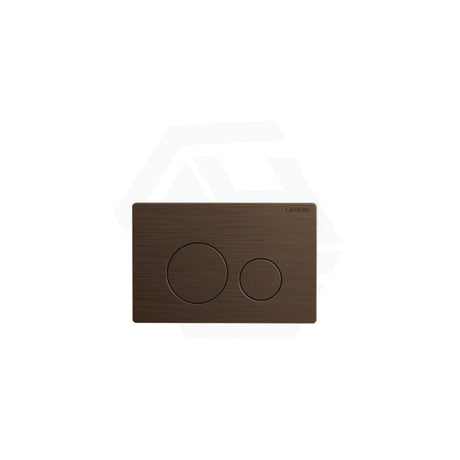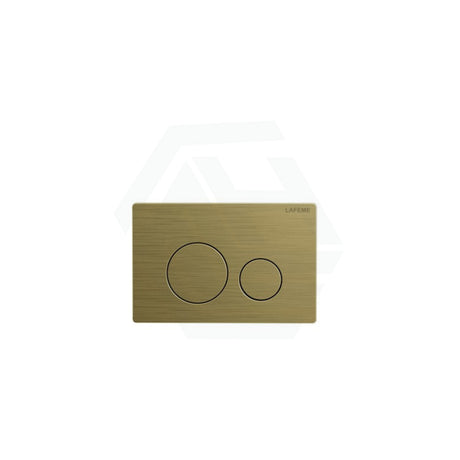Finding Your Perfect Japanese Toilets Match
Are you searching for a bathroom upgrade that combines luxury, hygiene, and technology? Japanese toilets might be exactly what you need. These advanced fixtures offer features like heated seats, warm water washing, and automatic functions that traditional toilets simply can't match. Many customers initially look for a basic toilet suite in Japanese style but discover the comprehensive benefits these systems provide. Beyond just a japanese bidet toilet seat, these complete units integrate seamlessly into your bathroom while offering unparalleled comfort and cleanliness. Consider whether you need features like automatic flusher, deodorization, or personalized washing settings. For families, look for models with multiple user profiles to save individual preferences. For elderly or mobility-impaired users, Japanese toilets with higher seat heights and convenient control panels offer accessibility benefits. These innovative toilets have transformed bathroom experiences in Australia, providing solutions for those seeking improved hygiene, comfort, and modern convenience all in one sophisticated unit.
Quality Materials in Modern Japanese Toilets Construction
When investing in premium Japanese toilets, understanding the materials and construction quality is essential for making an informed decision. Japanese toilets are renowned for their exceptional build quality, typically featuring high-grade vitreous china or porcelain that resists staining and maintains its appearance for years. These materials undergo intensive firing processes at temperatures exceeding 1200°C, resulting in an extremely durable and non-porous surface that inhibits bacteria growth—a key consideration for bathroom fixtures. The Japanese toilet seat components are typically crafted from antimicrobial resins or plastics that prevent bacterial growth while providing comfortable ergonomics.
Leading brands like Toto, Kohler, and Seima use advanced manufacturing techniques that ensure precision in every component. The electronic parts in Japanese toilets are designed with waterproofing technologies to prevent moisture damage despite their bathroom environment. Many toilet suite in Japanese designs incorporate specialized glazes that enhance hygiene by preventing waste from adhering to the bowl, significantly reducing cleaning frequency and chemical use. The internal mechanisms, including motors, pumps, and heating elements, are engineered for longevity, with many manufacturers offering 5-10 year warranties on these critical components.
Australian customers should look for models that meet IP44 or higher water resistance ratings, ensuring electrical components remain safe in humid bathroom environments. The control panels on premium Japanese toilets utilize sealed membrane buttons or remote controls designed to withstand daily use and cleaning products. For eco-conscious consumers, many manufacturers now incorporate recycled or sustainable materials in non-critical components. The nozzles that deliver water in bidet functions are typically made from self-cleaning materials like stainless steel that resist mineral buildup from Australian water supplies. With proper maintenance, quality Japanese toilets can maintain their performance and appearance for 15-20 years, making them a valuable long-term investment in your bathroom.
Innovative Functions of Premium Japanese Toilets Systems
Exploring the functionality of Japanese toilets reveals an impressive array of features designed to elevate your bathroom experience. At the core of these advanced fixtures is the integrated bidet function, which distinguishes Japanese toilets from conventional models. This hygienic washing system typically offers adjustable water temperature, pressure, and spray patterns to provide personalized cleansing. Most premium models feature both posterior and feminine wash options, catering to all users' needs. The Japanese toilet seat usually includes heating elements with adjustable temperature settings, offering welcome comfort during cooler Australian winters.
Many high-end Japanese toilets incorporate air-drying functions that eliminate or reduce the need for toilet paper, enhancing both hygiene and environmental sustainability. Motion sensors enable hands-free operation, with automatic lid opening and closing when you approach or leave the toilet suite in Japanese style. Advanced models feature automatic flushing systems that determine appropriate water volume based on usage time, optimizing water efficiency. The deodorizing filtration systems use activated carbon or catalytic converters to eliminate odors, maintaining bathroom freshness.
For nighttime convenience, most Japanese toilets include subtle LED illumination that guides users without disrupting sleep cycles with harsh lighting. Self-cleaning nozzles that sanitize themselves before and after each use enhance hygiene and reduce maintenance. Many models feature oscillating and pulsating spray options that provide gentle massage effects for therapeutic benefits. Pre-mist functions in some Japanese toilet models spray a fine water mist in the bowl before use, preventing waste adhesion and reducing cleaning frequency. Memory settings allow multiple users to save their preferred configurations for water temperature, pressure, and seat heating.
Australian consumers particularly appreciate the water-saving functionality of modern Japanese toilets, which typically exceed WELS 4-star ratings while maintaining effective flushing performance. The intuitive control panels or remote controls provide easy access to all functions, with some premium models now offering smartphone app integration for ultimate customization of your Japanese toilet seat experience.
Design Aesthetics of Japanese Toilets for Stylish Bathrooms
When selecting Japanese toilets for your Australian home, design aesthetics play a crucial role. Modern Japanese toilets feature sleek, minimalist designs that complement contemporary or traditional bathrooms. The sculptural forms of premium models enhance visual appeal while maintaining ergonomic comfort.
Wall-hung styles are increasingly popular in Australia, providing a floating effect ideal for compact bathrooms—similar to the efficient layouts seen in floor toilets in japan. Rimless bowl designs enhance hygiene and modern aesthetics. Color options now include beige, grey, and black to suit different décor styles.
Control panels and remotes are designed with equal attention to style, blending technology with elegance. LED lighting contributes to ambiance. Proportions are engineered to create balance, avoiding the bulky appearance of traditional toilets.
Many interior designers recommend models with concealed connections for clean, modern lines. Integrated bidet functionality eliminates the need for separate fixtures, simplifying the bathroom’s overall visual flow. High-end models incorporate precision metal finishes to coordinate with tapware and accessories.
For homes inspired by global trends, some homeowners also look to toilets in tokyo for sleek, ultra-compact design inspiration.
Purchasing Guide for Quality Japanese Toilets in Australia
Navigating the purchase of Japanese toilets in Australia requires understanding the market, available brands, and buying options to ensure you get the best value. Leading suppliers like Kohler, Seima, and Fienza offer premium Japanese toilets with comprehensive warranties and reliable after-sales support. When comparing models, consider both initial purchase price and long-term running costs, including water and electricity usage. Most quality Japanese toilet seat options range from $300 for basic models to over $3,000 for advanced systems with full feature sets.
Australian bathroom retailers typically showcase a selection of Japanese toilets in their showrooms, allowing customers to view the design and build quality firsthand. Many suppliers offer professional installation services, which is recommended given the electrical and plumbing requirements of toilet suite in Japanese style fixtures. For budget-conscious shoppers, consider previous-generation models that offer substantial discounts while maintaining core functionality. Some retailers provide periodic promotions on Japanese toilets, particularly during bathroom renovation seasons or end-of-financial-year sales.
When purchasing online, look for retailers offering detailed specifications, installation guides, and clear return policies. Australian consumers should ensure their chosen Japanese toilets comply with local electrical standards (AS/NZS 3350.2.84) and waterproofing requirements. Many suppliers offer interest-free payment plans for premium models, making advanced Japanese toilet technology more accessible. Before finalizing your purchase, verify the availability of replacement parts and consumables for your chosen model, as these can vary by brand and supplier.
Professional bathroom designers can provide valuable advice on selecting the appropriate Japanese toilet model for your specific space and requirements. For comprehensive bathroom renovations, bundling your Japanese toilets purchase with other fixtures may yield significant savings. Australian consumers should check that their electrician and plumber are familiar with installing these specialized fixtures, as proper installation is crucial for performance and warranty validity. When comparing similar models, consider the manufacturer's reputation for reliability and customer service in the Australian market, as this can significantly impact your long-term satisfaction with your Japanese toilet seat purchase.
Environmental Benefits of Modern Japanese Toilets Technology
Choosing Japanese toilets supports environmental sustainability. These fixtures incorporate advanced water-saving systems using as little as 3–4.5 liters per flush. Their efficiency typically exceeds WELS 4-star standards.
Precision engineering ensures powerful flushing with minimal water use, especially in models combining bidet and toilet functions—an example of a bidet wc combination that reduces toilet paper waste.
Energy-saving features include standby modes and thermal retention heating. Some models use innovative energy-harvesting systems.
Manufacturers are adopting sustainable materials and carbon-neutral production. Durability reduces landfill waste. Take-back programs further support environmental goals.
Self-cleaning features reduce the need for harsh chemicals, minimizing water pollution. Water-stressed regions especially benefit from these high-efficiency systems. Many Australian green building programs award points for installing efficient fixtures.
 View Detail
View Detail

